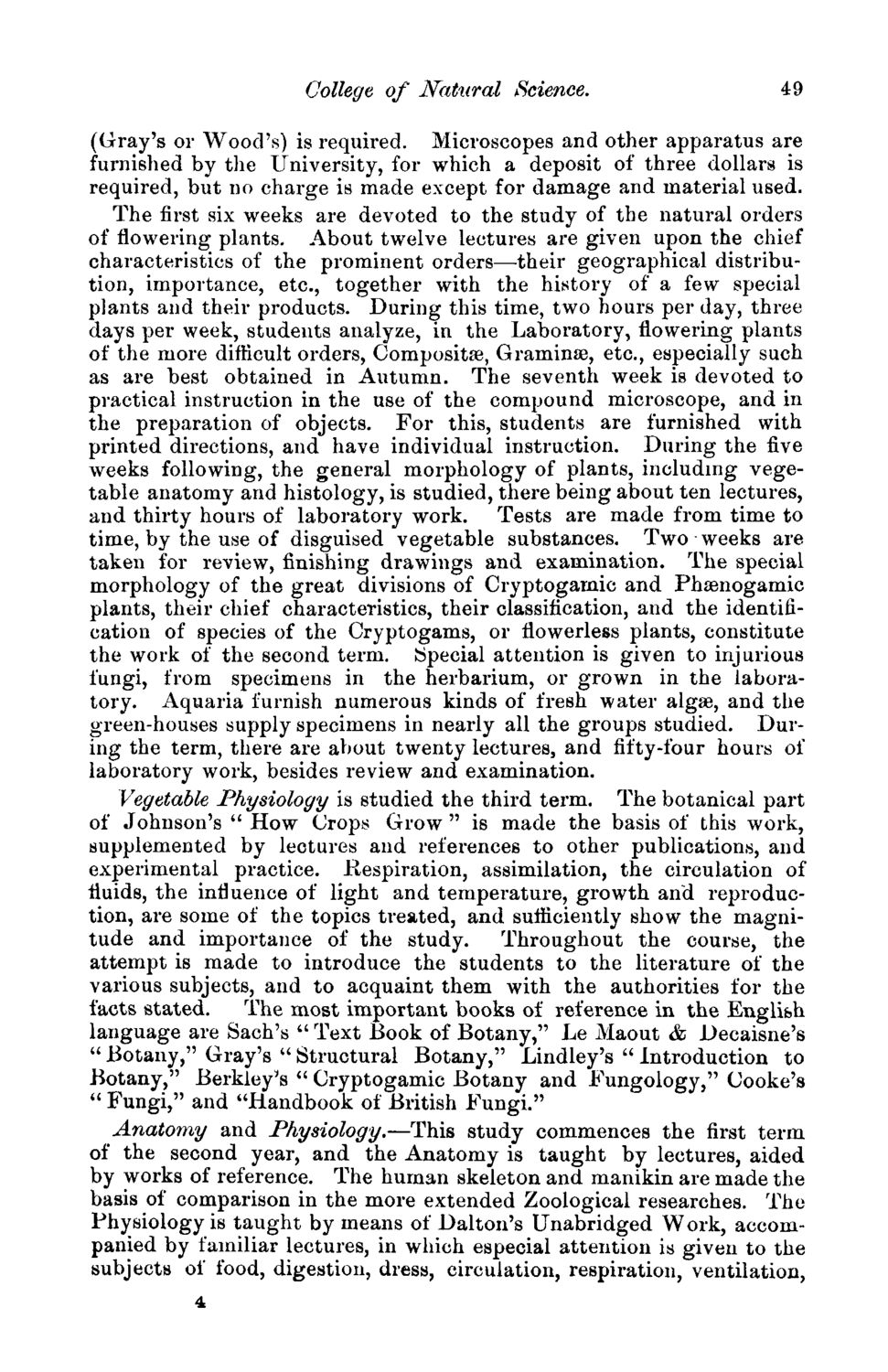| |
| |
Caption: Course Catalog - 1876-1877
This is a reduced-resolution page image for fast online browsing.

EXTRACTED TEXT FROM PAGE:
College of Natural Science. 49 (Gray's or Wood's) is required. Microscopes and other apparatus are furnished by the University, for which a deposit of three dollars is required, but no charge is made except for damage and material used. The first six weeks are devoted to the study of the natural orders of flowering plants. About twelve lectures are given upon the chief characteristics of the prominent orders—their geographical distribution, importance, etc., together with the history of a few special plants and their products. During this time, two hours per day, three days per week, students analyze, in the Laboratory, flowering plants of the more difficult orders, Composite, Graminse, etc., especially such as are best obtained in Autumn. The seventh week is devoted to practical instruction in the use of the compound microscope, and in the preparation of objects. For this, students are furnished with printed directions, and have individual instruction. During the five weeks following, the general morphology of plants, including vegetable anatomy and histology, is studied, there being about ten lectures, and thirty hours of laboratory work. Tests are made from time to time, by the use of disguised vegetable substances. Two weeks are taken for review, finishing drawings and examination. The special morphology of the great divisions of Cryptogamic and Phaenogamic plants, their chief characteristics, their classification, and the identification of species of the Cryptogams, or flowerless plants, constitute the work of the second term. Special attention is given to injurious fungi, from specimens in the herbarium, or grown in the laboratory. Aquaria furnish numerous kinds of fresh water algae, and the green-houses supply specimens in nearly all the groups studied. During the term, there are about twenty lectures, and fifty-four hours of laboratory work, besides review and examination. Vegetable Physiology is studied the third term. The botanical part of Johnson's " How Crops Grow " is made the basis of this work, supplemented by lectures and references to other publications, and experimental practice. .Respiration, assimilation, the circulation of fluids, the influence of light and temperature, growth and reproduction, are some of the topics treated, and sufficiently show the magnitude and importance of the study. Throughout the course, the attempt is made to introduce the students to the literature of the various subjects, and to acquaint them with the authorities for the facts stated. The most important books of reference in the English language are Sach's " Text Book of Botany," Le Maout & Decaisne's " Botany," Gray's " Structural Botany," Lindley's " introduction to Botany," Berkley's " Cryptogamic Botany and Fungology," Cooke's " Fungi," and "Handbook of British Fungi." Anatomy and Physiology.—This study commences the first term of the second year, and the Anatomy is taught by lectures, aided by works of reference. The human skeleton and manikin are made the basis of comparison in the more extended Zoological researches. The Physiology is taught by means of Dalton's Unabridged Work, accompanied by familiar lectures, in which especial attention is given to the subjects of food, digestion, dress, circulation, respiration, ventilation,
| |